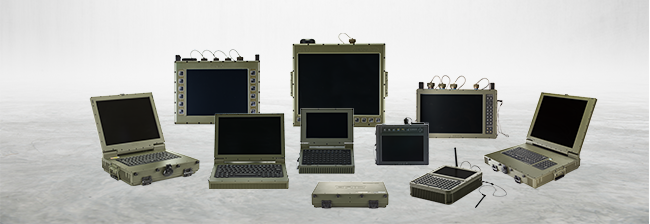There are many standard features of a commercial laptop that you would be lost without if they were removed, such as Wi-Fi, a camera and a microphone. For a military computer, however, these features are often prohibited to ensure security and ruggedisation. In this blog, we look at these ancillary features and explore the pros and cons of including them in the build of a military secure computer.

Imagine you’ve ordered a new laptop, maybe to use for online work meetings or to scroll social media channels, and you’re excited to try out all of its features. When it arrives, however, you are baffled as to why it has no camera or microphone, and you are unable to connect it to the internet.
On closer inspection, it appears to have very little in the way of functionality, and you can’t even plug in a separate webcam or dongle to connect to the internet a different way.
It is – in your view – useless.
And it is largely useless, if you are an everyday computer user, that is. While you see this as a below par specification for your laptop, in another world these features are lacking because they are not required, and including them in fact introduces a security risk.
Features that we take for granted in computers but can actually be a security risk in mil-spec computers include Wi-Fi connectivity, cameras, GPS location tracking, microphones, and even different types of connectors.
So, in the military domain, these features being absent is actually seen as a positive, necessary even, because it means that the device is completely secure in terms of both cyber threats and keeping secret information protected, as well as ensuring a device remains rugged.
Security measures
Many military projects simply do not require computers to have a long list of ancillary items, and the reason for that is usually security related. Security is paramount to military operations, and it cannot be compromised in any way.
If a computer is able to connect to a network via Wi-Fi, for example, it is then susceptible to a number of cyber threats from individuals or state-based hackers, including malicious software that can be used to steal sensitive data or corrupt systems. A Wi-Fi antenna also emits signals that could be detected by enemy forces through electronic warfare assets, which would put personnel in danger.
More often than not Wi-Fi is not needed, but of course can be included if a user wants to be able to wirelessly connect a computer over a very secure wireless network.
An ethernet connection is far more common in military computers, and it is rare for a customer to request that ethernet is not included in their configuration of a GRiD product. It is a reliable and fast interface, and can be used to connect a computer to a secure local area network.
However, if a computer does not need to connect to a network at all, even an ethernet port does not have to be included. Some sort of communication interface is typically required so that data transfer can take place, but a modular approach to design will ensure that the interface of choice is supplied.
When it comes to an installed webcam, this can often introduce a security risk that a hacker could access the computer’s imagery without the user’s knowledge, which could result in photos of confidential material being taken. Instances of hackers using malware to infiltrate personal webcam devices have been well-documented and the threat is very real.
GPS, meanwhile, has been a gamechanger for commercial devices, allowing users to find their way around a city with ease or see if a parcel is about to be delivered. Yet while this is fantastic for everyday life, giving away your location on military operations can be extremely dangerous. The war in Ukraine has shown the deadly effect of using mobile phones with GPS enabled, with hundreds of troops likely killed by the opposing side homing in on soldiers’ GPS and phone signals.
Blue force tracking, however, is increasingly common and involves using GPS to track forces, so it would be required in this instance.
Programming missiles also requires GPS, as do submarine computers and emergency location beacons, so there are a number of requirements that would call for this capability to be included in a military computer.
The need for a microphone in a computer is rare, largely because radios tend to be used for military communications and users do not want their voices recorded by a microphone.
There is the additional challenge of effectively sealing a microphone in a rugged chassis because it relies on being able to capture sound, but this is not to say that it cannot be included in a computer design if required.
Headphone jack requirements are also less common, but they are supplied when there is a need to plug headphones into the computer to listen to the software application sound output. Military connectors can be used to ensure that ruggedness is maintained.
GRiD’s bespoke approach to computer design
While there are some applications that require such auxiliary features, most military and defence organisations will purposefully exclude them from their requirements. As such, GRiD builds its computers without them as standard. Exclusion of these features enables us to make the devices extremely rugged and secure for the frontline.
These features are included as standard in the design by many rugged computer manufacturers, and removing them for security reasons introduces production line challenges that need to be addressed, as modifications will need to be made to ensure the computers are manufactured correctly to the new design.
At GRiD, our systems are designed, engineered and hand-built as military rugged hardware, which means that the production line can easily adapt to a bespoke, highly secure design requirement. Interfaces as well as internal electronics are configured to suit requirements, and this is the approach taken for the specification and manufacture of all of our systems.
No hardware is wasted with GRiD’s approach to system design, and only what is needed is included in a computer build. This saves on cost and design time, and ensures that a customer receives a computer that perfectly meets their specification. Nothing more, nothing less.

If you would like to discuss secure computing in more detail, please get in touch on +44 (0)1628 810 230 or drop an email to sales@griduk.com.

